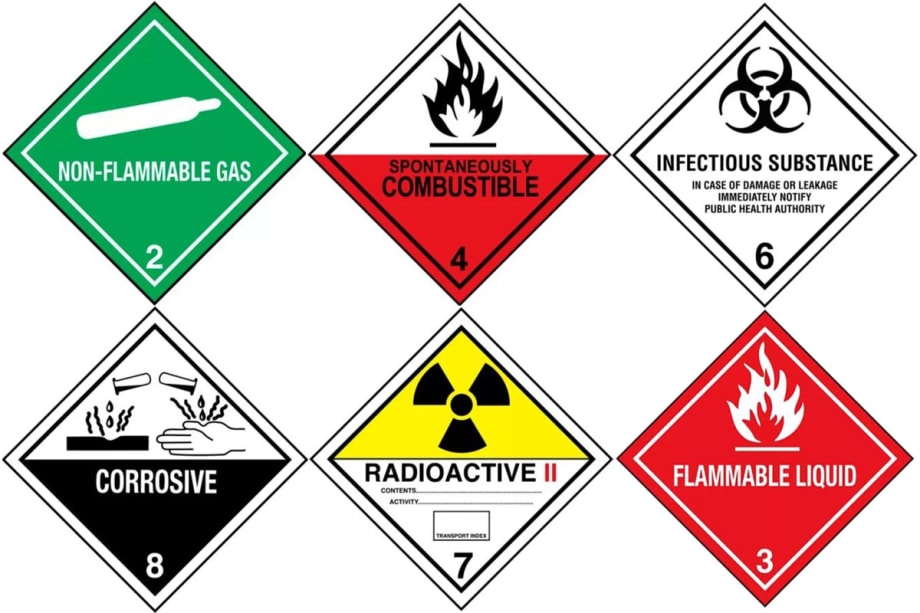Note that some classes have a host of subcategories. For example, Class 1 explosives range from 1.1 indicating major explosive capability to 1.6 indicating little to no risk of major explosion. In Class 2, flammable gasses are shown with 2.1 while nonflammable gasses are shown with 2.2 and toxic gasses are shown with 2.3. Classes 4, 5, and 6 also have subcategories.
There are myriad UN numbers—far too many to list here—but they can be vitally important. The most commonly seen on American roads and railways are things like 1203 (a red placard indicating gasoline) and 1263 (a red placard indicating paint).
A green placard may put someone dangerously at ease if they fail to observe the number 1009, which indicates Halon—a colorless, non-flammable gas primarily used for fire suppression—that can cause damage to skin and eye at minimum and even heart attack in extreme cases. Or perhaps a person may be unalarmed by a green placard with the UN number 1005, which indicates Ammonia, a chemical that can quickly be fatal if mishandled.
Using Appropriate Caution
When a major accident occurs—a highway traffic collision involving a tractor-trailer displaying a number of HAZMAT placards—it's almost always the police who are first on the scene.













